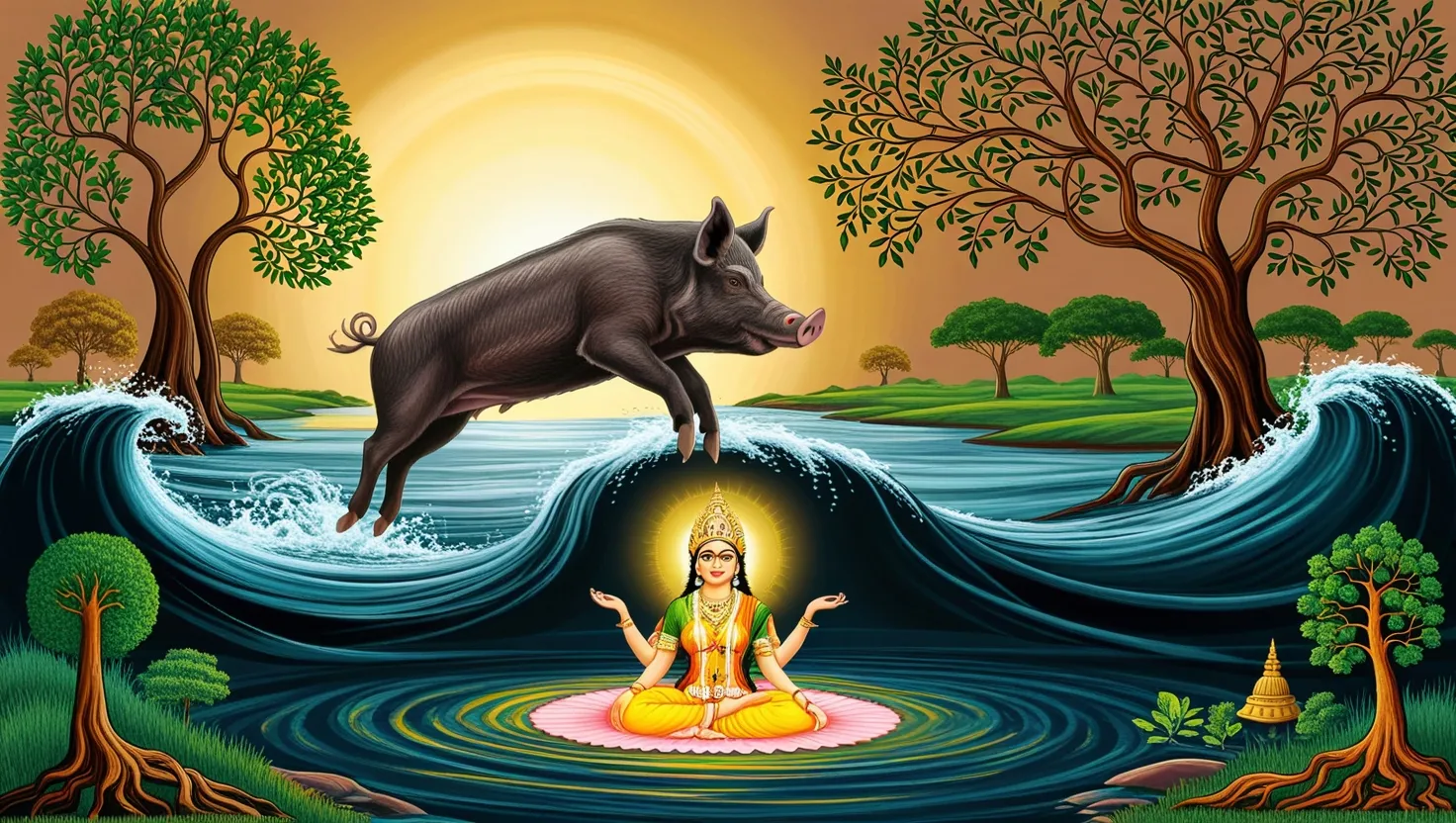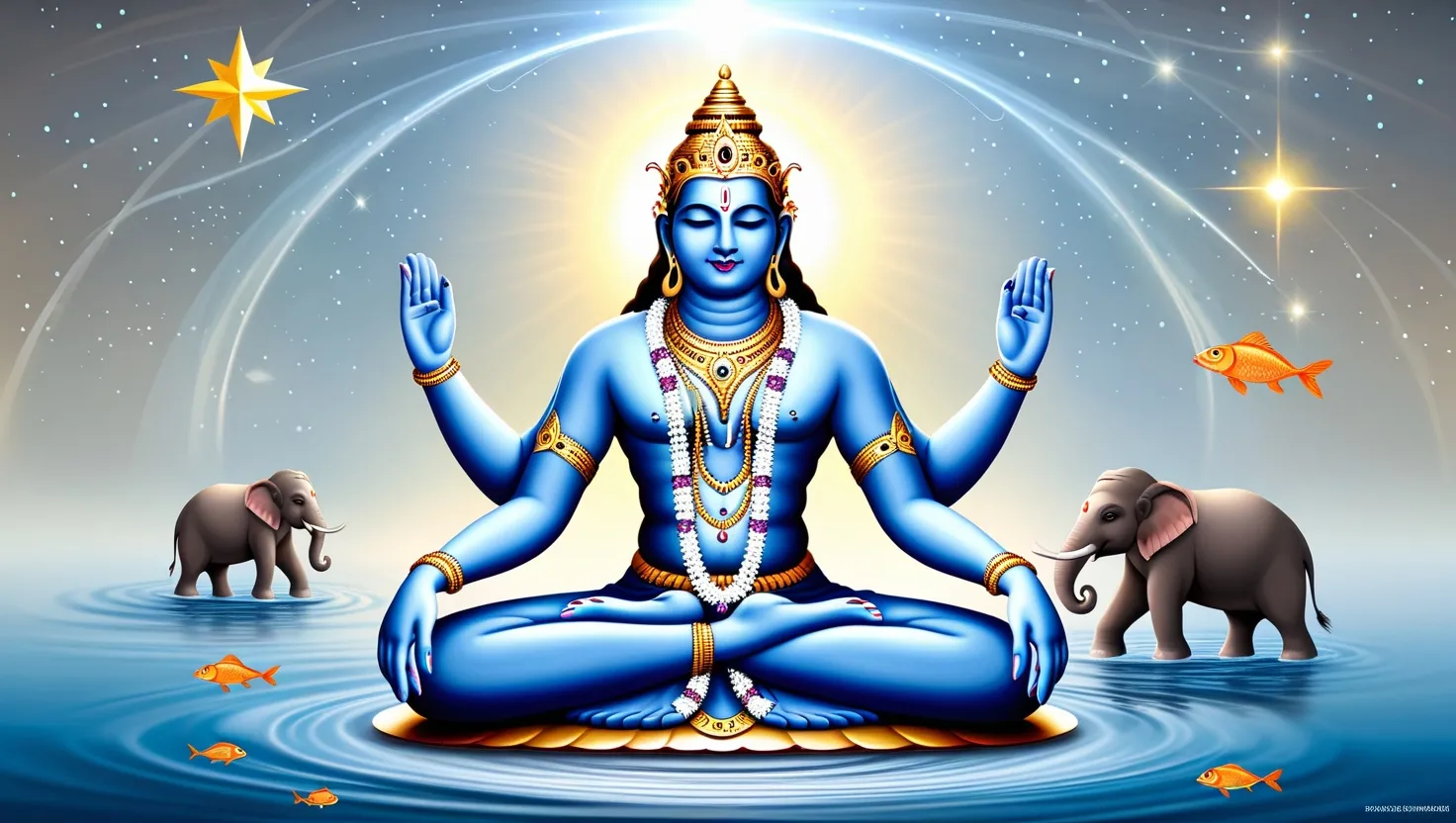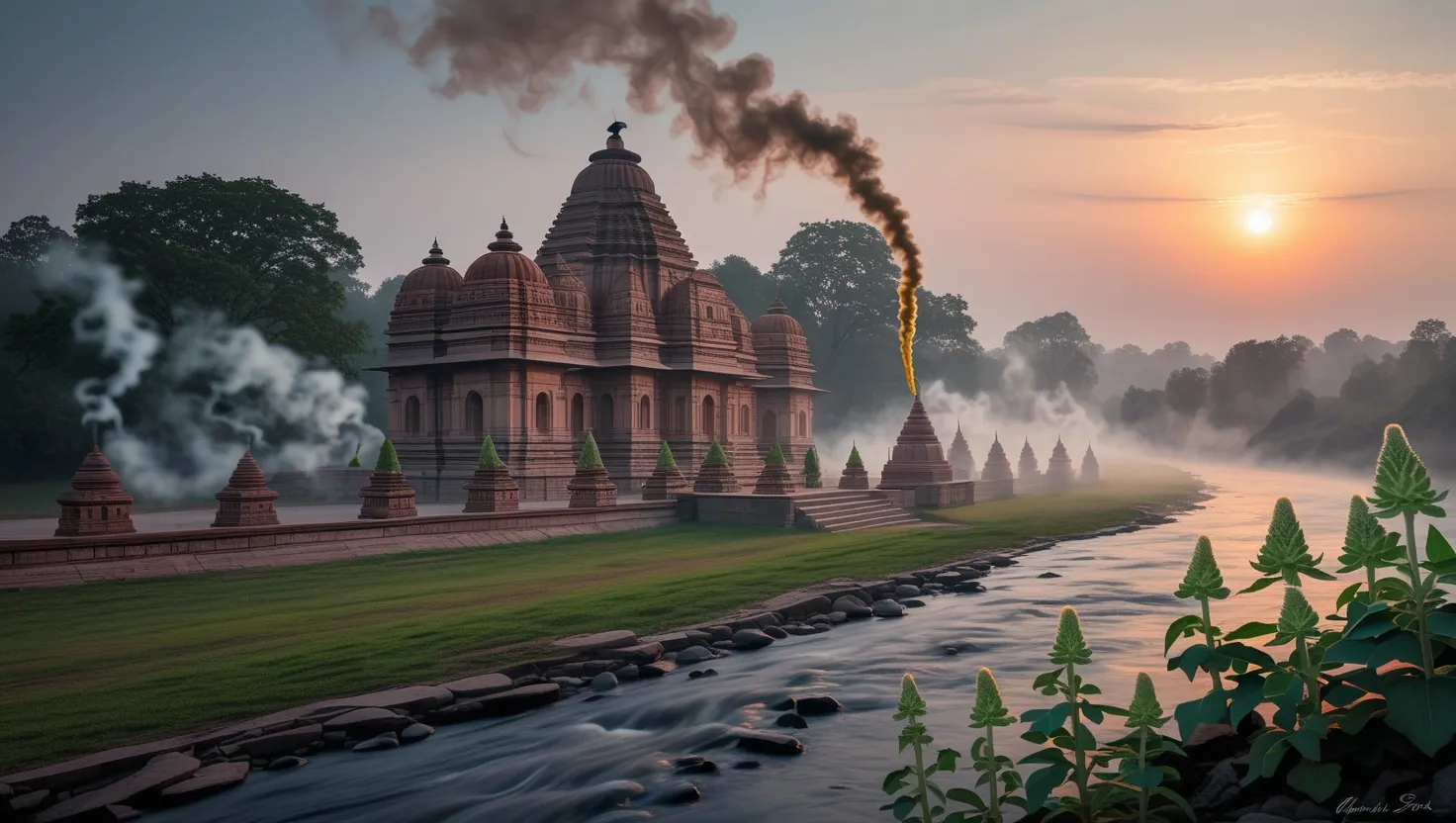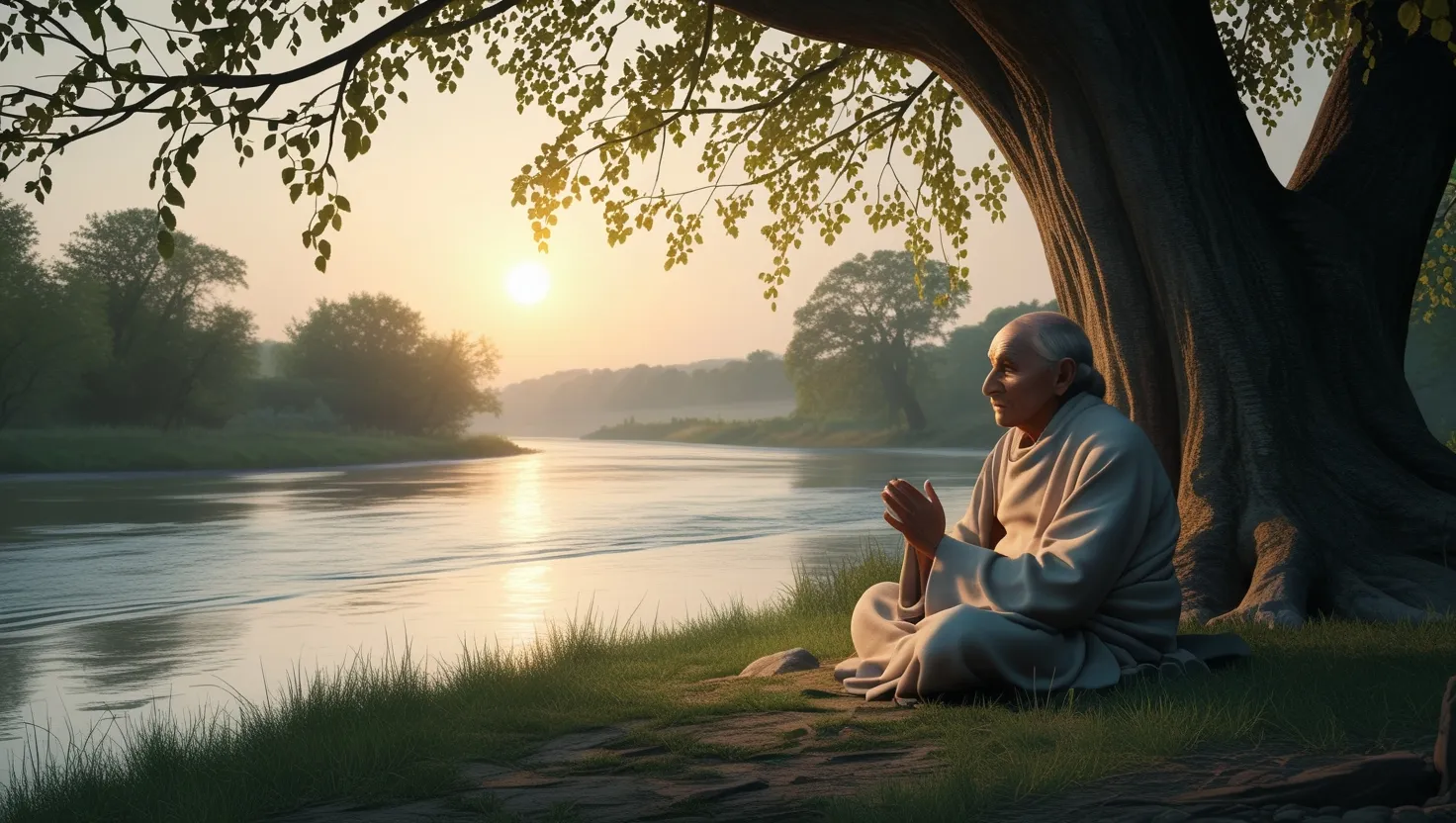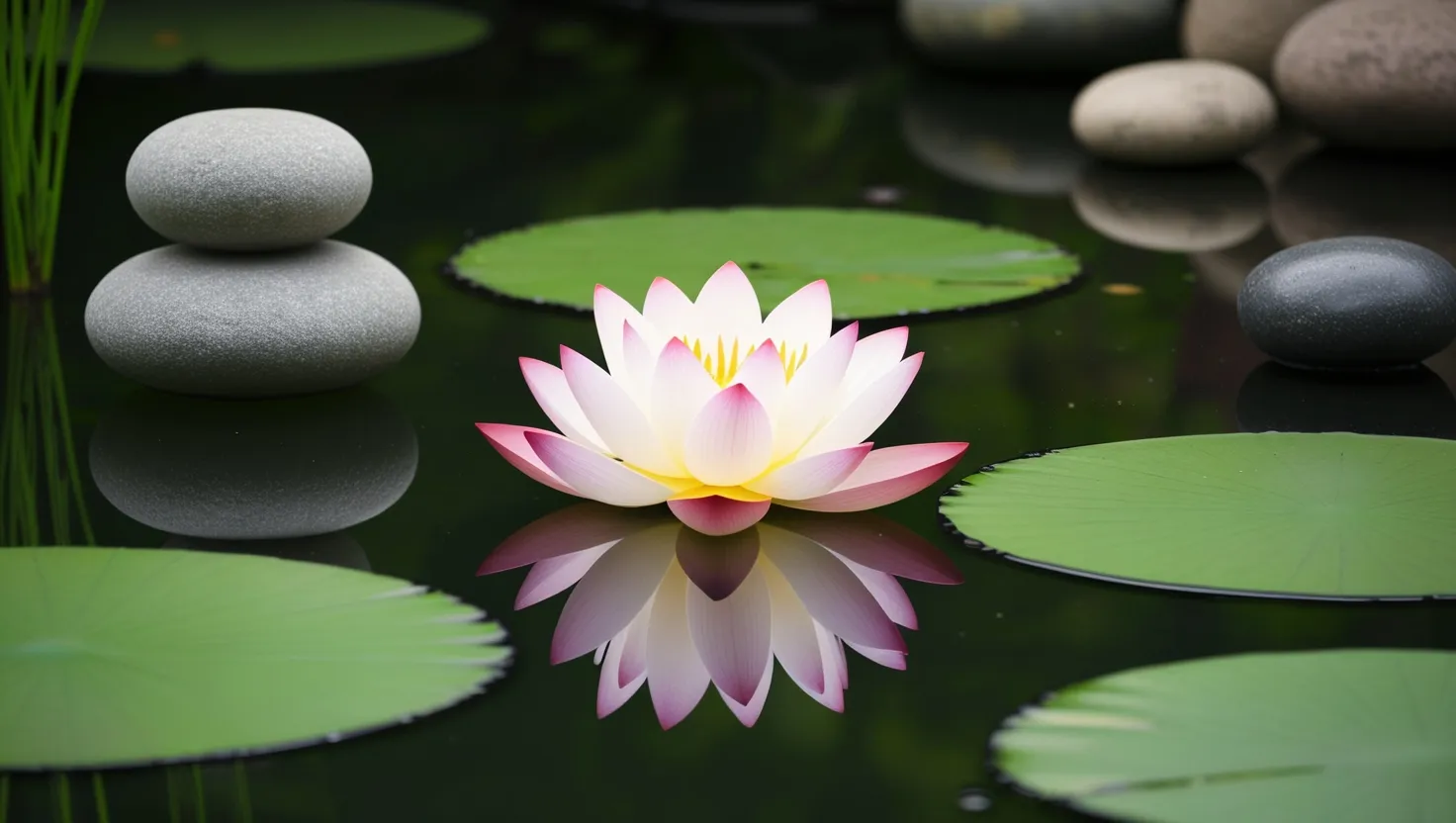The story of the Varaha Purana is not just a myth. It’s a vivid reminder that environmental awareness isn’t new or modern; it’s been woven into human stories for thousands of years. Picture Vishnu, in the mighty form of a boar, diving deep into the dark and chaotic waters to save the earth goddess Bhudevi. If I imagine the earth as a living, feeling being, rather than just rock and dirt, everything about how I treat my surroundings starts to shift.
What does it mean to honor the land? In this Purana, Bhudevi is sacred and sentient. She suffers when neglected and thrives when cared for. This idea pushes me to ask: Is the planet just a set of resources, or is she—and all her creatures—our kin? When we read that the act of saving her is a sacred deed, it is not just a story; it’s a call for stewardship.
“Look deep into nature, and then you will understand everything better.” — Albert Einstein
The boar itself holds surprising significance. Boars are relentless, earthy creatures, rooting and reshaping landscapes as they forage. Vishnu does not choose a grander, more majestic animal but a humble one so essential to soil health. Could this be a subtle nudge for me to work with nature instead of fighting against it? Watching how boars aerate soil, I’m reminded that ecosystem health is built on simple acts repeated over time.
That famous rescue—lifting the earth from chaos into stability—echoes modern restoration efforts. When wetlands are rebuilt or forests replanted, are we, in a way, replaying that ancient divine gesture? What happens when we forget that healing is constant, messy, and rarely completed in a single moment?
“Earth does not belong to us; we belong to earth.” — Chief Seattle
The Varaha Purana offers another angle, treating acts like planting trees as forms of worship. It’s not just nice to plant a tree; it’s sacred. In fact, the Purana says planting certain trees earns spiritual merit. Cutting one down, on the other hand, is seen as grave sin. Trees in this view aren’t just timber or shade. They are life-givers, souls worthy of respect. I find it fascinating that the ancient teaching equates growing forests with sustaining righteousness. If our culture took that seriously, how many forests would still stand today?
If I pause to ask: What rituals connect me to the earth? The Purana is full of prayers and ceremonies aimed at Bhudevi, expressions of gratitude and reciprocity. Giving thanks and asking forgiveness for the gifts of food, shelter, and water—these habits might seem quaint, but doesn’t gratitude make every action toward the earth weightier? When I see farmers honoring the soil before sowing seeds, I realize the echoes of those ancient practices continue.
“Adopt the pace of nature: her secret is patience.” — Ralph Waldo Emerson
Lesser-known is the deliberate focus on preserving medicinal and sacred trees. The Varaha Purana singles out the Peepul and Neem—not only for their spiritual value, but also for their vital ecological role. Peepul provides oxygen and supports diverse life through its shade. Neem is revered for its medicinal properties. These trees are more than religious symbols; they represent biodiversity at work, quietly sustaining communities.
What if we saw every tree as an ancient treasure, not just an object for harvesting? Modern science now confirms what old stories suggested. Saving endemic species like Peepul and Neem preserves genetic diversity and cultural heritage that can never be replaced. When the Purana urges planting and protection of such trees, it calls us to stewardship rooted in awe and foresight.
Water is another recurring theme in these tales. The flood that threatens Bhudevi is not just a disaster; it marks the thin line that separates chaos from order. Ancient verses link clean water to spiritual and physical health. Polluting rivers isn’t simply an environmental issue—it’s an act against the sacred order. If I ask myself what water means to my life, do I see it as sacred, or just another commodity? The Purana’s warnings against harming water sources are more relevant than ever. Only by safeguarding our rivers can life persist.
“In every walk with nature one receives far more than he seeks.” — John Muir
Looking closer, I see a consistent thread urging humans to see themselves as part of a larger whole. Rituals, prayers, and daily acts in the Varaha Purana build a system of reciprocity. Survival isn’t just a struggle—it’s a partnership. I am asked to give back, to stop waste, to protect what supports life.
Here’s a question worth pondering: If stewardship is sacred, what new traditions might I create to honor nature? Maybe it’s a yearly tree-planting in my neighborhood, or a moment of silence before meals to thank the soil and rain. Could these small acts shift perspectives, making the abstract idea of “sustainability” something we live by every day?
“The environment is where we all meet; where we all have a mutual interest; it is the one thing all of us share.” — Lady Bird Johnson
Sometimes the wisdom in the Varaha Purana feels unexpectedly progressive. It sees ecological crises as spiritual warnings. Destruction of forests, pollution of water—they’re not just environmental failures but moral lapses. There’s a prompt to self-reflection: Is my lifestyle restoring order, or adding to chaos? The myth’s message is plain—healing the earth is every person’s duty, not reserved for gods or a handful of experts.
Curiously, the Varaha Purana does not separate the material and the spiritual. Bhudevi’s pain and restoration mirror our own. If I harm the land, I harm myself—spiritually, physically, existentially. This ancient logic anticipates the idea of interconnectedness. Actions taken miles away eventually impact me, too.
“Nature never hurries. Atom by atom, little by little she achieves her work.” — Ralph Waldo Emerson
The layers of wisdom in the Varaha Purana challenge me to rethink progress. What if innovation is not about conquering the earth, but cooperating with it? The boar’s victory isn’t achieved by force alone, but by relentless persistence and deep knowing. In moments of environmental crisis, could the answers lie in respecting natural limits?
Another unusual lesson is the honoring of balance between fire and coolness, the “Agneya” and “Somiya tatva.” Even ancient texts caution that too much of one element disturbs the whole. Modern environmental science spends so much energy quantifying balance—whether in carbon cycles, water flows, or species populations. But the old stories teach that wisdom is knowing when enough is enough.
“Only when the last tree has died and the last river been poisoned and the last fish been caught will we realize that we cannot eat money.” — Cree Proverb
I think about the ways the Varaha Purana has formalized respect for the earth through law and tradition. Protecting forests wasn’t just advice; it was mandate. Wanton destruction invited social and spiritual consequences. What if our communities held each other accountable for everyday choices? Would the world look different if environmental duty was built into our ethical codes?
This story also nudges me to see restoration as a shared process. One soul may rescue, but many hands are needed to protect. That’s why the Purana ties rituals to communal life—everyone has a role in thanksgiving, planting, and nurturing. Maybe I underestimate the power of small daily actions, multiplied across a society.
“How strange that nature does not knock, and yet does not intrude!” — Emily Dickinson
When I reflect on the seven strands of wisdom in the Varaha Purana—the sanctity of earth, the humility of the boar, the call for restoration, the reverence for trees, the rituals of gratitude, the sanctity of water, and the ethic of stewardship—I realize the ancient has much to teach the modern.
If you were to choose just one teaching to live by this week, what would it be? Would it be expressing gratitude before every meal? Would it be planting a single sapling? Would it be treating water with reverence? Sometimes wisdom is not grand, it is quiet and steadfast.
“What we do to the environment is ultimately what we do to ourselves.” — Wendell Berry
In these teachings, I see a future where personal responsibility, spiritual practice, and ecological repair walk hand in hand. The Varaha Purana does not offer easy fixes or only poetic visions. It asks everyone—storyteller, listener, and actor—to lift, restore, and honor the earth. That’s a challenge worth meeting, in every age.
